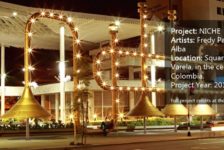As landscape architecture students, the rapture upon completing a university year is something we all look forward to, and come crunch-time, can often be the shimmering light and the end of a very dark tunnel. The holiday period between each university years is a great time to kick back and relax; after all, you deserve it. But during this stage of quietude, it is also essential to continue the learning process to ensure a cognitive mindset come the new academic year. With all that spare time on your hands, here are five valuable steps to help you stay sharp over the break. 1. Read a book or three (landscape architecture related)
Reading has a myriad of positive effects, but during the semester it can often be hard to capture the edification books provide due to the laborious nature of your study load. That’s not to say you shouldn’t read while at university, but the end of year break presents a valuable period to broaden your knowledge of the discipline. Aim to read at least three books, on different subjects related to landscape architecture. These books can be contemporary, such as The Fundamentals of Landscape Architecture and Visual Communications For Landscape Architecture, or classic landscape literature by authors such as Ian McHarg. Anything that will give you the upper edge next semester. 2. Get outdoors / travel Following the confinement you frequently subject yourself to during those late nights in front of your desk, you will often emerge from the depths looking rather “Gollum-esque”. The holiday period grants you the opportunity to actually get out and experience the landscape! If you are financially able to travel abroad, then go and cultivate some worldliness and behold great landscape architecture around the globe. If not, it’s no reason to fret. Nature is everywhere, and can be easily enjoyed through bushwalks, hikes, and road trips. Even your local park will do! Getting outdoors clears and refreshes the mind, and most importantly gives you the chance to make connections between your learning and the real-world environment. 3. Boost your repertoire No matter what stage of your degree you are in, there will always be room for improvement in certain aspects of your skill set. This could be anything from free hand sketching, technical drawing, software programs, or even developing your conceptual and critical thinking. Strengthening these traits will deliver the confidence needed to tackle any project thrown at you, and will present you in an appealing light to potential employers. There are magnitudes of free tutorials online that can be taken advantage of. It’s important to note that these shouldn’t be viewed as gruelling tasks; after all, you are on holidays! Just set aside some time each week to knuckle down and boost your design repertoire. It will pay dividends in the long run. 4. Work experience With legions of landscape architecture students all competing for job placements upon completing university, simply being a graduate doesn’t cut it anymore. Experience really makes the difference, and the earlier the exposure to the office the better. Doing so will expose you to the rigor of the working environment, giving you the upper hand when entering the real-world workforce. This can be an internship or work experience, either paid or voluntary (usually the case). But don’t sell yourself short. If you possess a certain skill set (achieved from step 3!) display them in style through a creative portfolio or resume. 5. Embrace other creative disciplines Throughout the semester landscape architecture is well and truly your focus, but the holiday break allows you more time to explore other areas of design. This could be visual arts, fashion design, or architectural and interior design which interest you. These avenues should serve as inspiration and insight into all things creative, giving you the opportunity to broaden your mind and view design from another perspective, molding you into a well rounded designer. Holidays are to be savored, so these five steps are designed to be both straightforward and enjoyable. Implementing them throughout your break will provide the opportunity to better yourself as a landscape architecture student, letting you hit the ground running come class time. Article written by Paul McAtomney Featured image: Helder Almeida / shutterstock.com Published in BlogLogin
Lost Password
Register
If this is your first time on the new site, please click "Forgot your password?". Follow the steps to reset your password. It may be the same as your old one.














